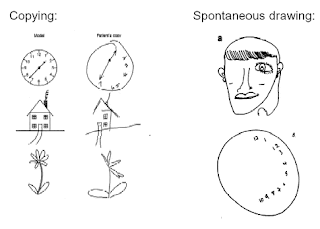The last lecture of term talked about neuropsychological assessments help to identify and understand the exact brain damage on a intelligence scale and how much motor, emotional and other life treating problems are occurring at the same time as well as accurate interpretation of the patients deficits and how difficulties these impairments are. There are different classes of neurolopsychological test, such as testing a patients intelligence, his learning and memory and others like testing a patients decision making. Many previous studies with these test have been done and one that is particularly interesting for me by Owen et al. (1997) examined patients with Parkinson's disease that were either under the influence of medication or not, whether their spatial,verbal and visual woking memory was impaired. It was found that in all three tasks, patients that were medicated for Parkinson's disease did very badly,whereas patients with fewer symptoms did only poorly on the spatial working memory task. Compared to the non-medical patients who were fine on all three tasks. Previous studies suggested that especially cognitive deficits such as memory develops and progress within Parkinson's disease to the frontal lobes. This research agrees with previous material, that due the development of dopamine in the striatum the level of spatial working memory can be impaired.
One of the famous recognition memory task is the "Rey- Complex Figure" (Rey, 1941) which examines visual memory in patients with brain damage. Patients are asked to copy the figure first and that after a pause draw the figure from their memory. The reason why patients have problems with such task is that not just the memory is needed, also planning and attention is needed. The implicit memory of the patient is impaired as immediate and delayed conditions are used for this task. The reason for the non color use is that patients would be more able to recognize on the color rather than the figure.
|







